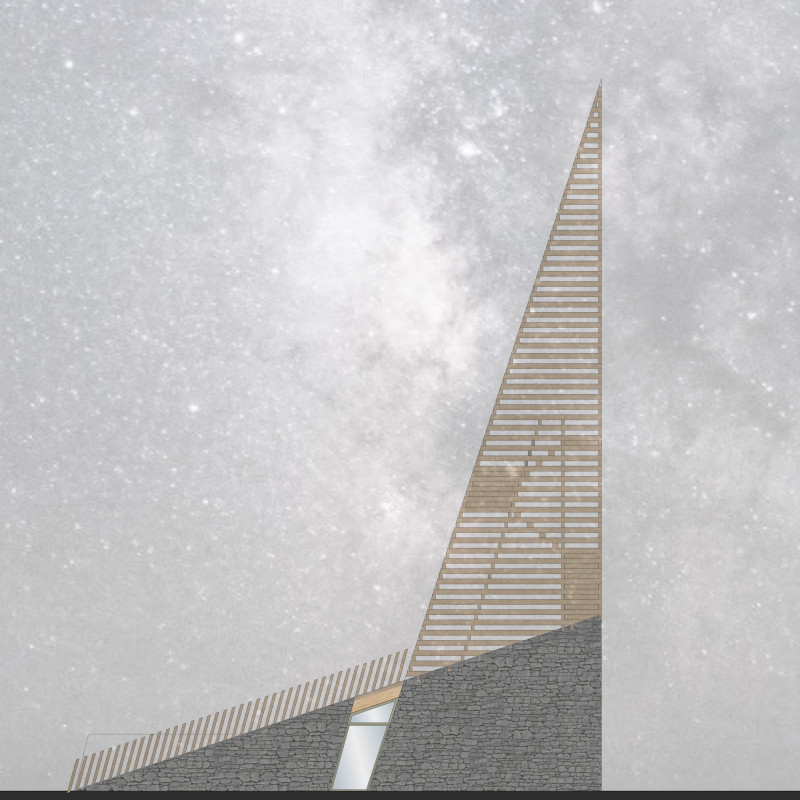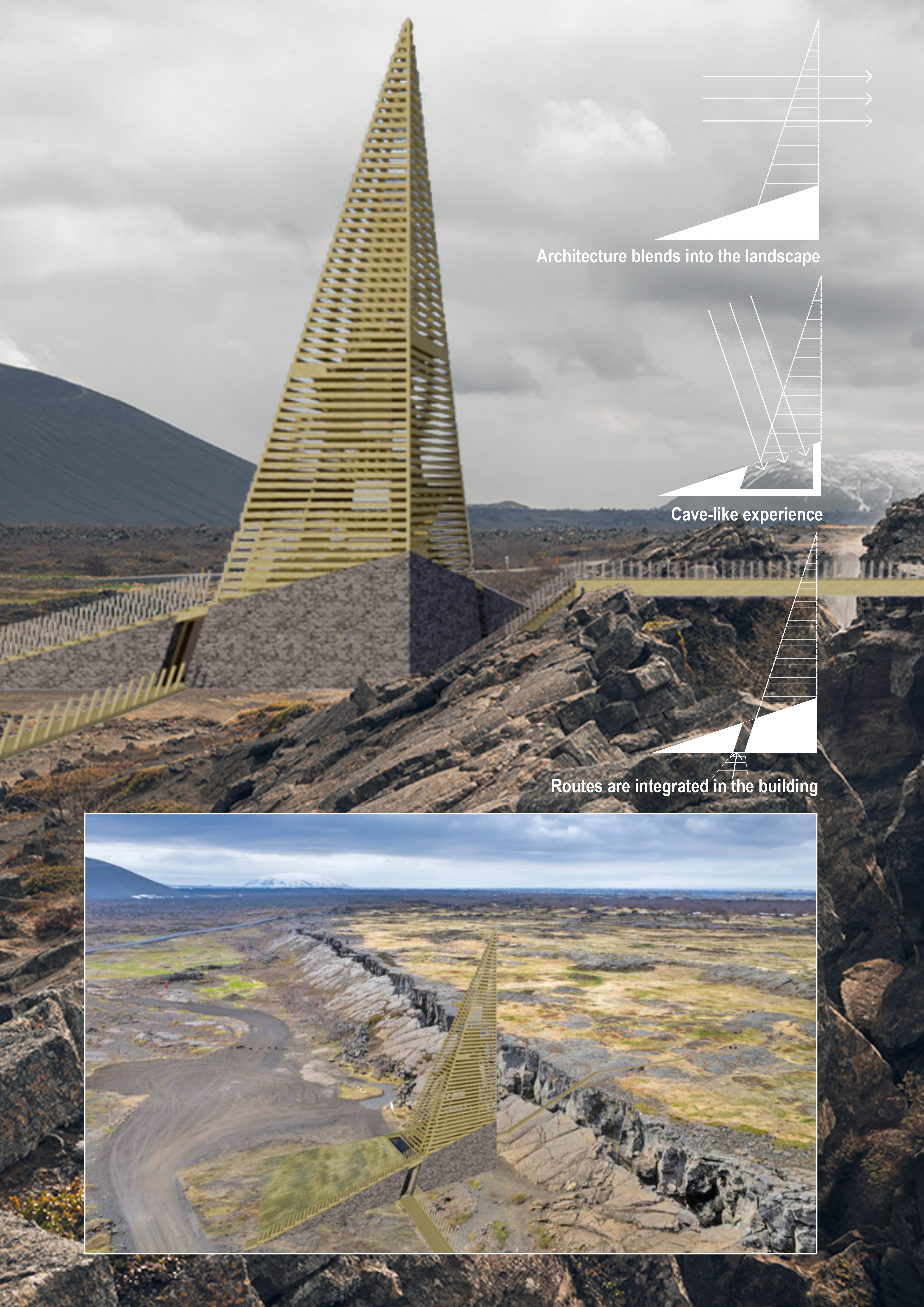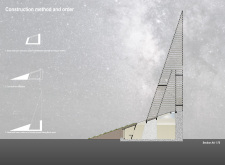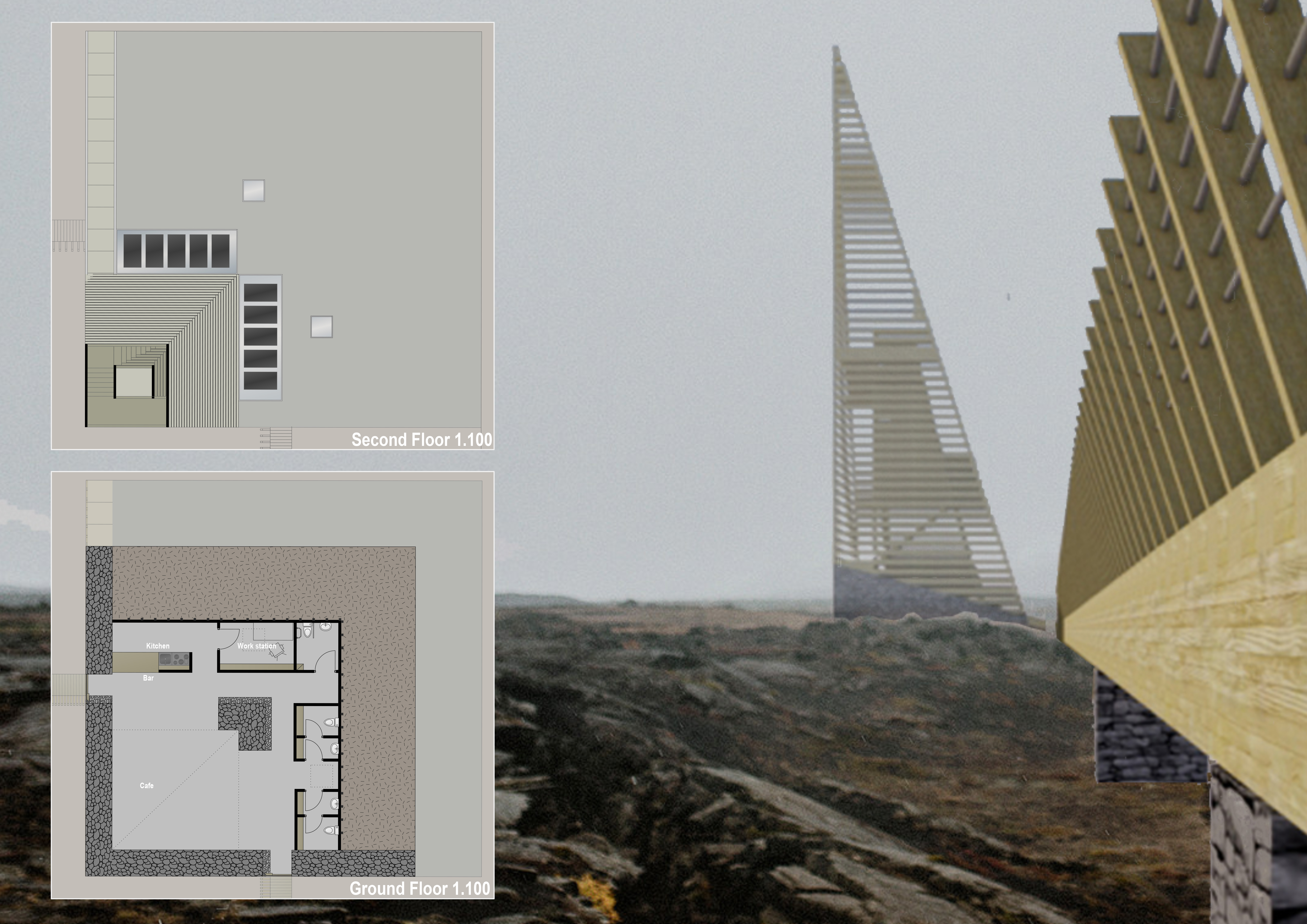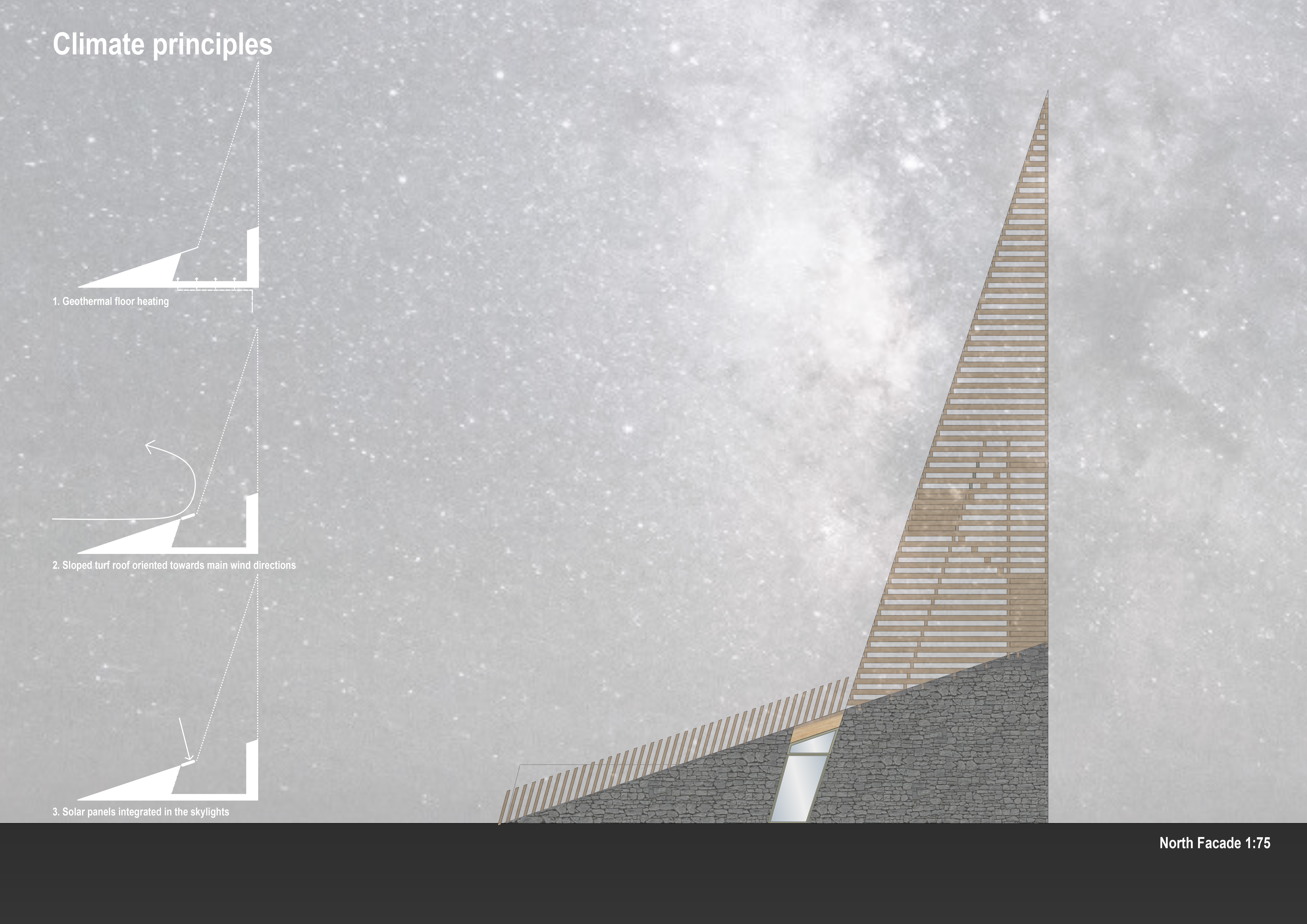5 key facts about this project
The architectural design integrates its form with the landscape while focusing on a cave-like experience. Set against the backdrop of traditional Icelandic architecture, the building accommodates various functions such as a kitchen, bar, cafe, and work station. The design encourages a strong connection between the occupants and the natural environment through its careful layout and circulation.
Construction Methodology
The building employs a blend of stone and wood, reflecting methods seen in the Icelandic "turf house." This construction approach allows the structure to resonate with the local architectural tradition. The combination of stone and wood provides both durability and effective thermal performance, which is crucial for the climate. A layer of turf is added for insulation, supporting energy efficiency in the building’s design.
Materiality
A hand-built tower stands out as a significant architectural feature, made from locally sourced Downy Birch wood. This tower not only serves a practical purpose but also highlights local craftsmanship. The use of materials that are native to the area strengthens the connection to the environment and promotes sustainability by supporting local resources.
Climate Strategies
The design includes several strategies aimed at enhancing energy efficiency. Geothermal floor heating makes use of the Earth’s natural heat, maintaining comfortable indoor temperatures. A sloped turf roof is aligned with the main wind directions, further protecting the structure from harsh weather while promoting natural ventilation. Solar panels are integrated into the skylights, enabling the building to generate renewable energy and increase natural light within the interior spaces.
Attention to detail is evident in the way the design balances functionality with the character of the surrounding landscape. The careful choice of materials and climate-responsive strategies create a sense of harmony between the architecture and its natural setting. Elements work together to enrich the experience of the space, ultimately reflecting a thoughtful approach to design that respects both tradition and modern needs.


